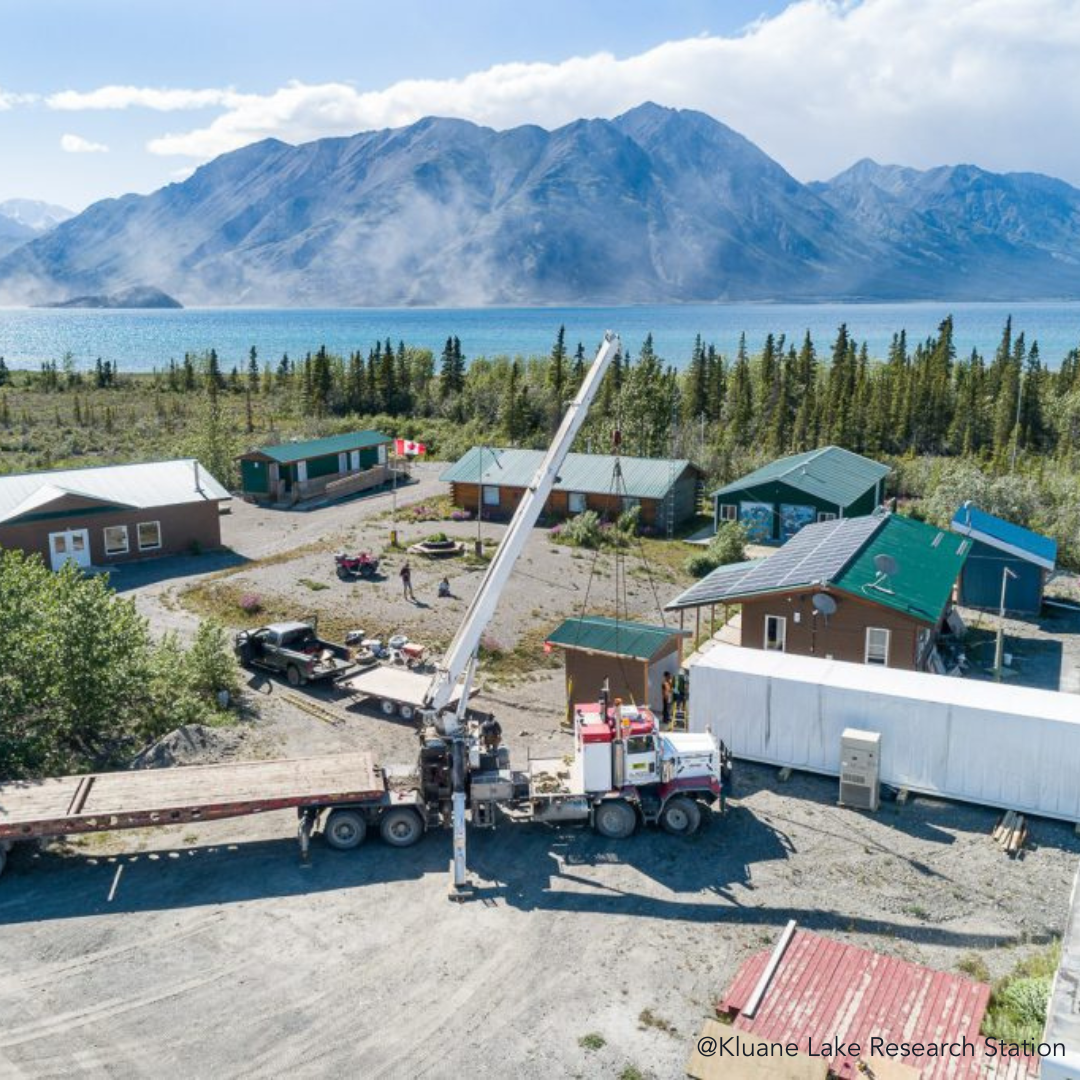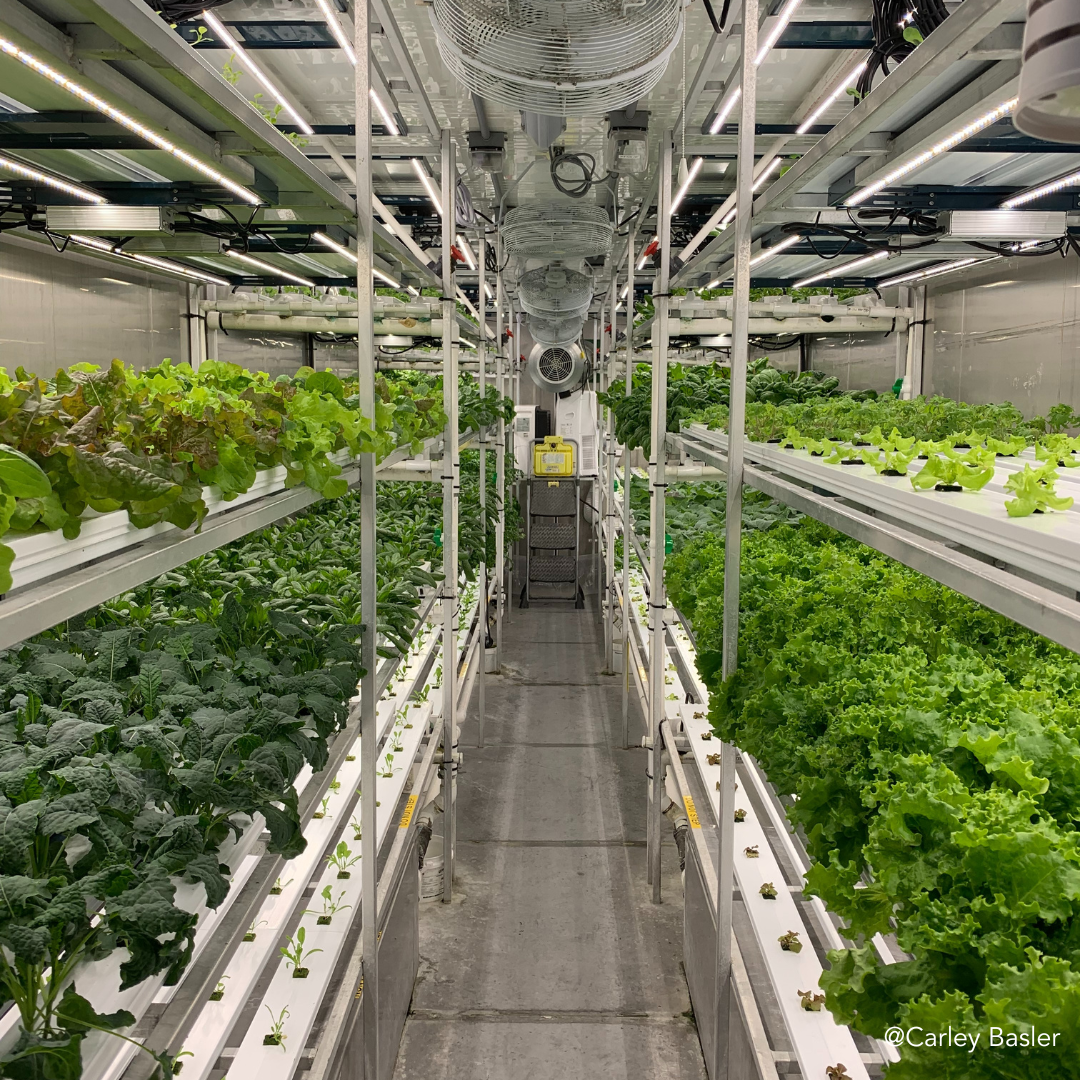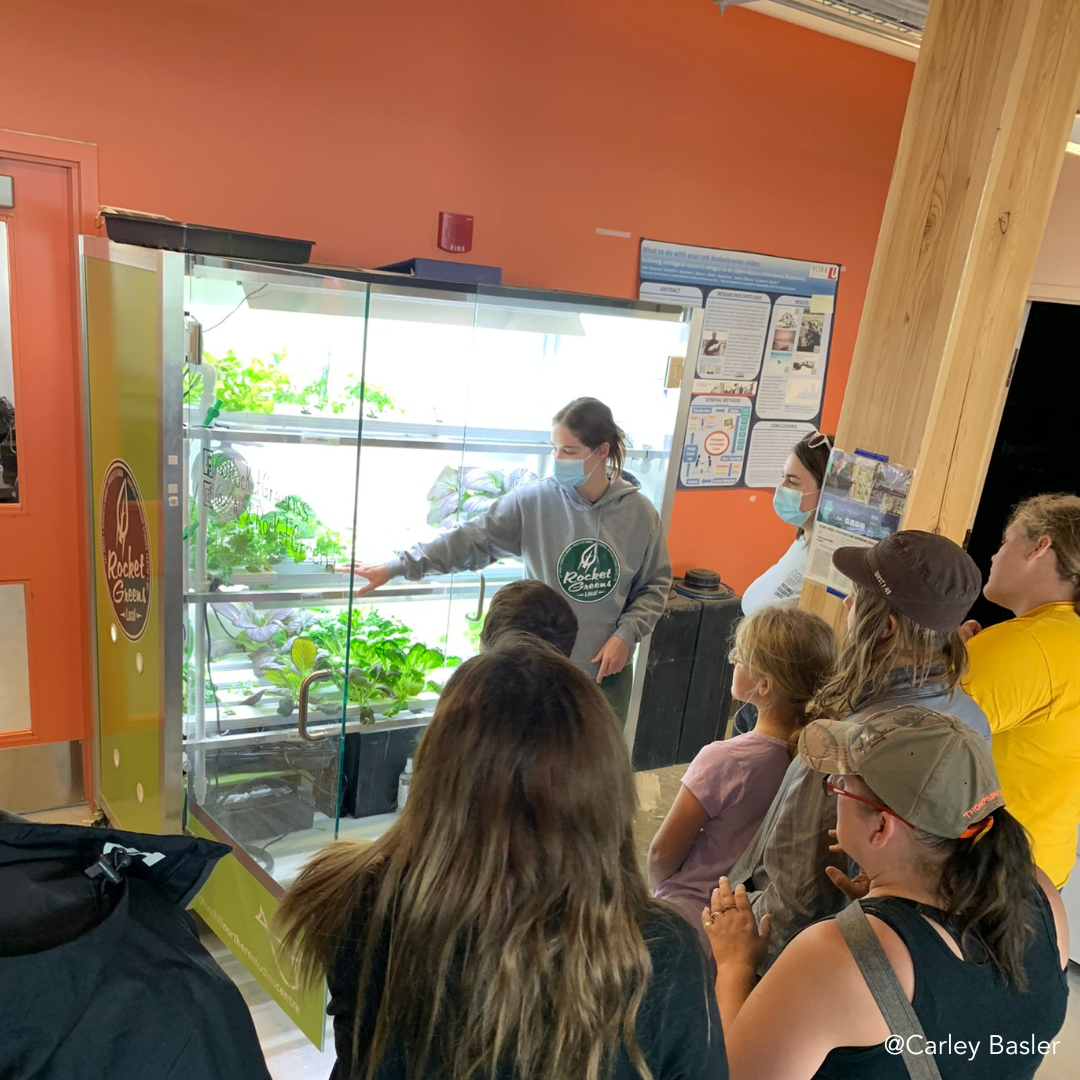Sustainable Energy and Food Solutions at Northern Research Stations
Northern research stations offer a unique opportunity for researchers working in the natural and social sciences to carry out their work while immersed in the Northern environment. These stations are equipped with accommodations, laboratories, technicians, equipment rentals and state of the art technology to optimize and facilitate research activities. However, like much of the North, sourcing clean energy and food security can be challenging for remote stations.
In Northern Canada, most regions depend on diesel or fossil fuels for heating and electricity due to a lack of infrastructure for renewable energy  projects. Similarly, food insecurity from remoteness, coupled with high-costs of shipping and storing perishables, continues to negatively impact northern communities. The Government of Canada has made steps towards addressing and providing solutions for these issues, such as the Local Food Infrastructure Fund (LFIF) and the Clean Energy for Rural and Remote Communities Program (CERRC). However, some northern research stations have taken it upon themselves to find clean energy and food security solutions first-hand. In this article, we present some of the sustainability efforts made by two of Canada’s leading northern research stations: Kluane Lake Research Station and the Churchill Northern Studies Centre.
projects. Similarly, food insecurity from remoteness, coupled with high-costs of shipping and storing perishables, continues to negatively impact northern communities. The Government of Canada has made steps towards addressing and providing solutions for these issues, such as the Local Food Infrastructure Fund (LFIF) and the Clean Energy for Rural and Remote Communities Program (CERRC). However, some northern research stations have taken it upon themselves to find clean energy and food security solutions first-hand. In this article, we present some of the sustainability efforts made by two of Canada’s leading northern research stations: Kluane Lake Research Station and the Churchill Northern Studies Centre.
Kluane Lake Research Station (KLRS) is owned and operated by the Arctic Institute of North America (AINA) at the University of Calgary. KLRS is located northwest of Whitehorse and occupies the traditional lands of the Kluane, Champagne and Aishihik, and White River First Nations. Since 1961, this station has supported researchers from across Canada in the disciplines of glaciology, geomorphology, biology, botany, and much more. For this article, I had the pleasure of discussing sustainability efforts at KLRS with Kristina Penn, the current Field Station Operations Manager and PhD candidate at the University of Calgary. Kristina shared that KLRS strives to leave a positive impact by reducing noise pollution, diesel consumption, and decreasing emissions. The former Field Station Operations Manager, Dr. Henry Penn, also wanted to increase the sustainability of KLRS and identified the challenges of installing innovative technologies in remote areas, thus leading to the creation of the Ag1054 project in the field of hydroponics and containerized agriculture.
Hydroponics are designed to remove the soil footprint from agriculture.  Instead, of flushing nutrients back to the soil, nutrient rich water is used in a highly controlled environment to grow produce without pesticides or chemicals. To maintain this “highly controlled environment” these plants are grown in the Ag1054 hydroponic growing unit. Ag1054 is an agriculture system that enables year-round production. This system is equipped with water supply, lights, heating and protection from the harsh sub-Arctic climate, allowing the culture of produce in less than favorable environmental conditions.
Instead, of flushing nutrients back to the soil, nutrient rich water is used in a highly controlled environment to grow produce without pesticides or chemicals. To maintain this “highly controlled environment” these plants are grown in the Ag1054 hydroponic growing unit. Ag1054 is an agriculture system that enables year-round production. This system is equipped with water supply, lights, heating and protection from the harsh sub-Arctic climate, allowing the culture of produce in less than favorable environmental conditions.
The Ag1054 project also designed to identify and report on experiences and challenges, so communities and other research organizations who may be interested in operating a similar system can be better informed. Thus, this comprehensive project included testing the system, taking notes and sharing results with communities. Ag1054 currently grows a myriad of leafy greens and herbs, such as cilantro, dill, lettuce, etc. Most of the produce grown in the Ag1054 unit is harvested then sent to local businesses, farmers’ markets, and locals, while the rest is purchased back by KLRS. Indeed, while the Ag1054 project operates at KLRS, it is maintained independently by community members who are employed by the project.
Moreover, around the same time the Ag1054 was acquired in 2020, 128 solar panels were installed at KLRS in conjunction with a lead acid battery bank, meaning that the Ag1054 system runs on solar power. Remarkably, these solar panels are able to operate the station on 1/6th of the amount of diesel it was previously using. Altogether, the solar panels and Ag1054 project have resulted in reduced emissions and soil footprint at KLRS with the added benefit of continuous access to fresh produce.
diesel it was previously using. Altogether, the solar panels and Ag1054 project have resulted in reduced emissions and soil footprint at KLRS with the added benefit of continuous access to fresh produce.
“We’re guests on this land here, and we’re grateful to be part of the community and for the opportunities that we have to operate in this setting. And so, sustainable operation is in line with the operating principles and sets an example in ways to which we can address solutions.” -Kristina Penn
To continue the legacy of the Ag1054 project, AINA has also undertaken a study at the KLRS to determine the feasibility of eliminating diesel and introducing a hydrogen storage component to the energy system. These innovative alternative energy solutions have attracted researchers from academic institutions across Canada, the United States and the United Kingdom. Most importantly, the Ag1054 project is an excellent demonstration of leadership in bringing renewable energy to the North and demonstrates the benefits of sustainable operations for the station and nearby communities.
Churchill Northern Studies Centre (CNSC)
The Churchill Northern Studies Centre (CNSC) is another leading research and education facility located just outside of Churchill, Manitoba that has strived “to understand and sustain the North” since 1976. I spoke with Carley Basler, the former Sustainability Coordinator at CNSC, who shared the efforts that have led up to CNSC receiving a Silver LEED Certification, and ongoing sustainability projects, most notably, the Rocket Greens initiative.
research and education facility located just outside of Churchill, Manitoba that has strived “to understand and sustain the North” since 1976. I spoke with Carley Basler, the former Sustainability Coordinator at CNSC, who shared the efforts that have led up to CNSC receiving a Silver LEED Certification, and ongoing sustainability projects, most notably, the Rocket Greens initiative.
When the CNSC built their new facility in 2011, much effort was put into making day-to-day operations more sustainable, such as composting and the biofiltration of wastewater. In addition, CNSC acquired The Growcer, similar to KLRS’s Ag-1054, to allow on-site hydroponic produce production, subsequently named Rocket Greens. Eventually, CNSC established a sustainability department to develop the Rocket Greens initiative, manage other sustainability efforts, and to strengthen relationships between CNSC and surrounding communities through sustainability programs. The main goal of the Rocket Greens project is to provide fresh, locally grown food year-round to community members at an affordable cost, thus categorizing it as a food security project. Indeed, 400-450 pieces of produce come out of the Growcer each week, which adequately meets the demand in Churchill.
The Rocket Greens life cycle is overseen by the CNSC sustainability department from start to end, and community gardening remains a priority. First Nations community members have opportunities to visit CNSC to see the Growcer in-person to harvest and make meals from the produce. The Rocket Greens project also works with the Warrior Caregiver Program, a program centered around Indigenous men’s mental health. Through this partnership, CNSC is able to connect with community members, support local organizations and provide opportunities for locals to be involved in the Rocket Greens initiative.
produce. The Rocket Greens project also works with the Warrior Caregiver Program, a program centered around Indigenous men’s mental health. Through this partnership, CNSC is able to connect with community members, support local organizations and provide opportunities for locals to be involved in the Rocket Greens initiative.
As sustainable development remains a priority in the context of the Arctic and Northern Policy Framework, we commend KLRS and CNSC for their ongoing efforts towards sustainable operations and for their efforts towards finding solutions for food insecurity.
Author: Julia Macpherson, ArcticNet Science Communications Coordinator